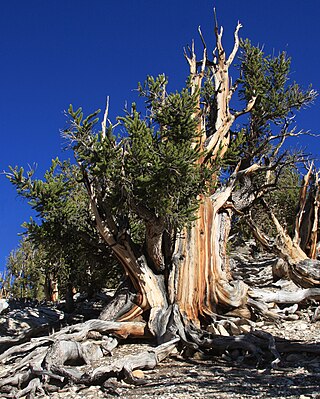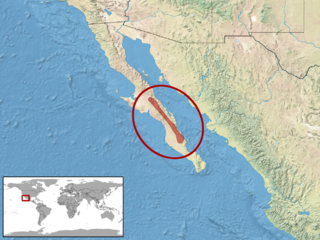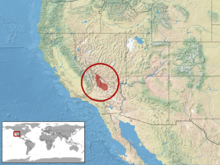
The southern alligator lizard is a common species of lizard in the family Anguidae. The species is native to the Pacific coast of North America. It ranges from Baja California to the state of Washington and lives in a variety of habitats including grasslands, chaparral, forests, and even urban areas. In dry climates, it is likely to be found in moist areas or near streams. There are five recognized subspecies.

The northern alligator lizard is a species of medium-sized lizard in the family Anguidae. The species is endemic to the North American west coast.

Pinus longaeva is a long-living species of bristlecone pine tree found in the higher mountains of California, Nevada, and Utah. Methuselah is a bristlecone pine that is 4,856 years old and has been credited as the oldest known living non-clonal organism on Earth. To protect it, the exact location of this tree is kept secret. In 1987, the bristlecone pine was designated one of Nevada's state trees.
An alligator lizard is any one of various species of lizards in the family Anguidae that have some shared characteristics. The term may specifically refer to:

The flat-tail horned lizard is a species of lizard in the family Phrynosomatidae. A species of reptile, it is endemic to the Sonoran desert of the southwestern United States and northwestern Mexico. Its multiple adaptations for camouflage help to minimize its shadow. The species is threatened, with a restricted range under pressure from human activities such as agriculture and development, and is specially protected in the United States.

The Mexican alligator lizard, also known as the green arboreal alligator lizard, is an endangered species of lizard endemic to the Sierra Madre de Oaxaca highlands of Mexico. It can be found in the states of Puebla, Veracruz, and Oaxaca. It was originally described under the genus Gerrhonotus as Gerrhonotus gramineus by Edward D. Cope in 1864.

The Inyo Mountains salamander or Inyo slender salamander is a species of salamander in the family Plethodontidae that is endemic to the Inyo Mountains of California in the western United States.

The Panamint chipmunk is a species of rodent in the squirrel family, Sciuridae. It is endemic to desert mountain areas of southeast California and southwest Nevada in the United States.

Anniella pulchra, the California legless lizard, is a limbless, burrowing lizard often mistaken for a snake.
Cope's arboreal alligator lizard is a species of lizard found in two isolated locations in Guatemala, one in the Alta Verapaz Department and one in the Jalapa Department. These lizard are found only in high altitudes of 2,000 to 2,600 feet above sea level, on the west and south sides of the mountain ranges. This lizard is one of 28 species of alligator lizards, most being arboreal, meaning they live in trees. These omnivores are considered endangered because of their small population size and they face extinction due to habitat degradation and from pressures of the pet trade.

The Madrean alligator lizard, also known commonly as King's alligator lizard and el lagarto de montaña in Mexican Spanish, is a species of lizard in the family Anguidae. The species is native to the southwestern United States and adjacent northwestern Mexico.

The Colorado Desert fringe-toed lizard is a species of medium-sized, diurnal lizard in the family Phrynosomatidae. It is adapted to arid climates and is most commonly found in sand dunes within the Colorado Desert of the United States and Mexico.
The Cedros Island alligator lizard is a species of medium-sized lizard in the family Anguidae. The species is endemic to Mexico.

The San Lucan alligator lizard is a species of medium-sized lizard in the family Anguidae. The species is endemic to Mexico.

The central peninsular alligator lizard is a species of medium-sized lizard in the family Anguidae. The species is endemic to Mexico.













